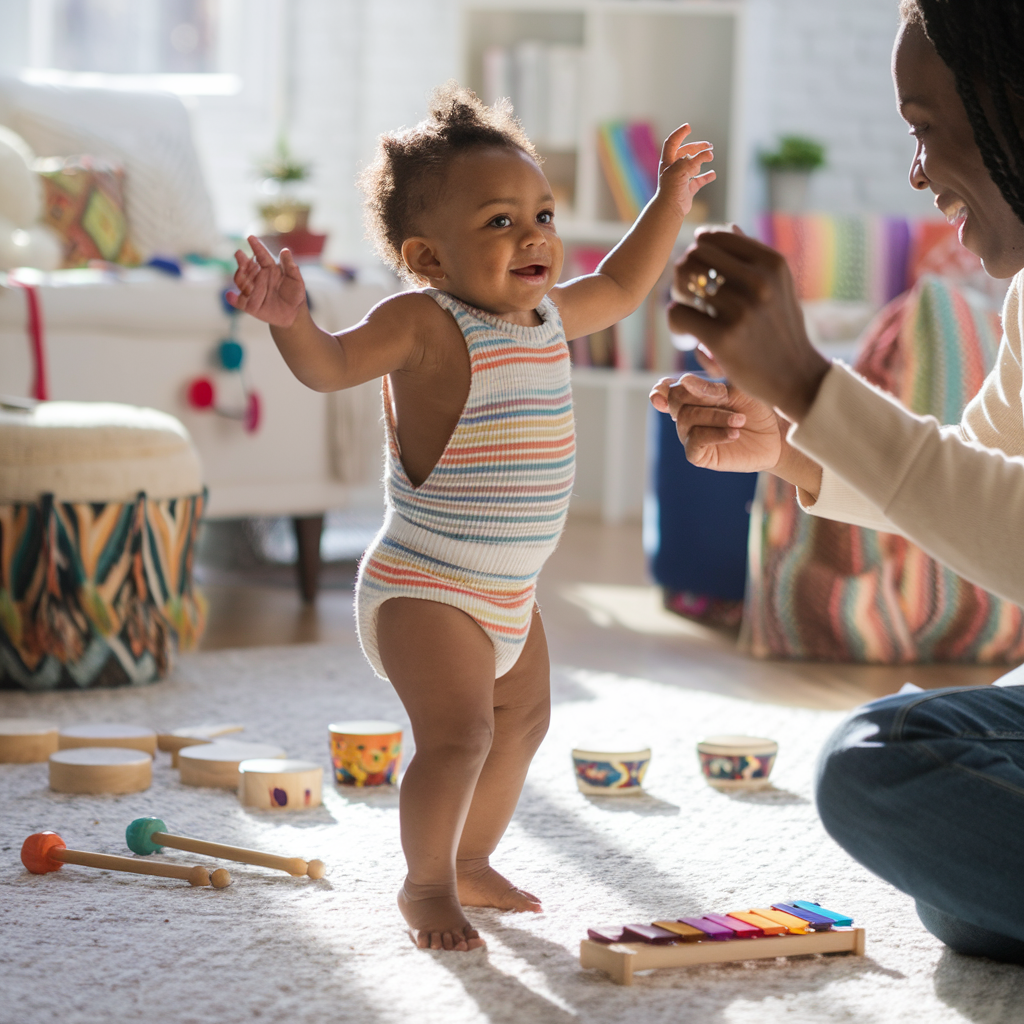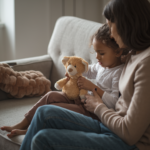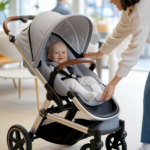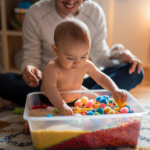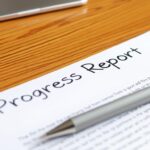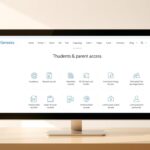Engaging babies in music and movement for babies is not only enjoyable but also essential for their development. From simple dancing to clapping along to the beat, these activities help babies develop motor skills, improve coordination, and boost cognitive abilities. In this guide, we’ll explore various music and movement activities that are both fun and beneficial for your baby’s growth.
Why Music and Movement are Important for Babies
Music and movement play a crucial role in the early stages of a baby’s development. These activities stimulate multiple areas of the brain, fostering growth in cognitive, physical, and emotional domains. Here’s why music and movement for babies are so important:
1. Enhances Cognitive Development
Listening to music and engaging in movement activities stimulate brain regions responsible for memory, attention, and problem-solving. The rhythmic patterns and melodies help in developing neural pathways that support cognitive functions. Source: Harvard Health
2. Promotes Physical Development
Movement activities such as dancing, clapping, and stretching help babies develop their motor skills. These actions improve coordination, balance, and muscle strength, laying the foundation for future physical activities like crawling, walking, and running.
3. Boosts Emotional and Social Growth
Music has a profound impact on emotions. Singing lullabies or dancing together creates a bond between parent and baby, fostering a sense of security and emotional well-being. Additionally, participating in group music activities can enhance social skills and cooperation.
4. Encourages Language Development
Exposure to music and rhythmic sounds enhances babies’ language skills. Singing songs with repetitive phrases and rhymes helps babies recognize patterns in language, making it easier for them to learn new words and sounds.
Fun Music and Movement Activities for Babies
Incorporating music and movement for babies into your daily routine can be both easy and enjoyable. Here are some activities to get you started:
1. Singing Songs and Nursery Rhymes
Singing familiar songs and nursery rhymes is a simple yet effective way to engage your baby. Songs like « Twinkle Twinkle Little Star » and « Itsy Bitsy Spider » are not only fun but also aid in language development.
How to Do It:
- Sing softly while gently rocking your baby.
- Use hand motions to accompany the lyrics, helping your baby connect movement with sound.
- Encourage your baby to clap their hands or move their arms along with the rhythm.
2. Dancing Together
Dancing with your baby is a wonderful way to promote physical activity and bonding. Whether it’s swaying gently or moving to upbeat tunes, dancing helps improve coordination and balance.
How to Do It:
- Hold your baby securely and move to the beat of the music.
- Try different dance styles, such as slow sways or gentle bounces.
- Make it interactive by letting your baby reach out and touch different parts of your body or the environment.
3. Clapping and Tapping Games
Clapping hands and tapping on surfaces introduce babies to rhythm and timing. These activities enhance motor skills and hand-eye coordination.
How to Do It:
- Clap your hands in a simple rhythm and encourage your baby to mimic you.
- Tap on a table or their tummy while singing a song.
- Use musical instruments like rattles or tambourines to add variety to the clapping and tapping.
4. Using Musical Instruments
Introducing your baby to musical instruments can be both entertaining and educational. Simple instruments like shakers, tambourines, and drums are perfect for babies.
How to Do It:
- Allow your baby to hold and shake a rattle or tambourine.
- Gently tap on a drum to create different sounds.
- Encourage your baby to explore how different instruments produce unique noises.
5. Storytime with Music
Combining storytelling with music creates a rich sensory experience. This activity enhances listening skills and fosters imagination.
How to Do It:
- Choose a short storybook with rhythmic text or repetitive phrases.
- Incorporate musical sounds or background music while reading.
- Use different tones and pitches in your voice to make the story more engaging.
Benefits of Music and Movement for Babies
Engaging in music and movement for babies offers a multitude of benefits that contribute to their overall development. Here’s a closer look at how these activities make a difference:
1. Improved Motor Skills
Activities that involve movement, such as dancing and clapping, help babies develop both fine and gross motor skills. Fine motor skills are enhanced through actions like grasping a rattle, while gross motor skills are developed through larger movements like waving arms and bouncing.
2. Enhanced Brain Development
Music stimulates the brain, promoting the growth of neural connections that support cognitive functions. Babies exposed to music early on show better memory retention, attention spans, and problem-solving abilities.
3. Emotional Regulation
Music has a soothing effect on babies, helping them regulate their emotions. Lullabies and soft melodies can calm a fussy baby, while upbeat tunes can make them feel happy and energized.
4. Language and Communication Skills
Listening to music and engaging in rhythmic activities support language acquisition. Babies learn to recognize sounds, tones, and rhythms, which are foundational for language development. Singing songs with repetitive phrases helps babies anticipate and understand language patterns.
5. Social Interaction and Bonding
Music and movement activities provide opportunities for interaction between parents and babies. These shared experiences strengthen the emotional bond and encourage social skills, such as turn-taking and cooperation. Source: BabyCenter
How to Incorporate Music and Movement into Your Baby’s Routine
Integrating music and movement for babies into your daily schedule can be seamless and enjoyable. Here are some practical tips to help you get started:
1. Create a Music Playlist
Curate a playlist of your baby’s favorite songs and nursery rhymes. Play it during playtime, naptime, or bedtime to create a consistent musical environment.
2. Set Aside Dedicated Time for Music and Movement
Allocate specific times each day for music and movement activities. This could be part of your morning routine, after naps, or in the evening before bedtime.
3. Use Everyday Moments for Musical Interaction
Incorporate music into daily activities such as diaper changes, feeding, or bath time. Singing songs during these moments makes routine tasks more enjoyable and engaging.
4. Attend Baby Music Classes
Many communities offer music classes designed for babies and parents. These classes provide structured activities and the opportunity to socialize with other parents and babies.
5. Utilize Music and Movement Apps
There are numerous apps available that feature interactive songs and movement activities for babies. These can be a fun addition to your music and movement routine.
6. Encourage Exploration with Musical Toys
Provide your baby with a variety of musical toys that they can explore independently. Toys that produce different sounds and rhythms keep them engaged and curious. Voir notre guide sur les jouets musicaux pour plus d’idées.
Safety Tips for Music and Movement Activities
While engaging in music and movement for babies, it’s important to prioritize safety to ensure a positive and risk-free experience. Here are some safety tips to keep in mind:
1. Choose Age-Appropriate Toys
Ensure that any musical instruments or toys you provide are suitable for your baby’s age. Avoid small parts that could pose a choking hazard and opt for sturdy, non-toxic materials.
2. Monitor Volume Levels
When using electronic musical devices or playing loud music, keep the volume at a safe level to protect your baby’s sensitive hearing. Prolonged exposure to loud sounds can be harmful.
3. Supervise All Activities
Always supervise your baby during music and movement activities to prevent accidents and ensure they are interacting safely with toys and their environment.
4. Create a Safe Play Area
Designate a clutter-free space for music and movement activities. Ensure there are no sharp objects or hazards that your baby could reach while moving around.
5. Be Mindful of Physical Movements
When dancing or moving with your baby, be gentle to avoid overstimulation or discomfort. Pay attention to your baby’s cues and adjust the intensity of activities accordingly.
Conclusion: The Power of Music and Movement in Your Baby’s Development
Incorporating music and movement for babies into your daily routine is a fun and effective way to support their overall development. From enhancing motor skills and cognitive growth to fostering emotional well-being and social interaction, the benefits of these activities are extensive. By creating a musically enriched environment and engaging in regular music and movement activities, you’re providing your baby with valuable tools for their growth and happiness.
So, turn up the music, move together, and watch your baby thrive through the joyful rhythm of music and movement!
